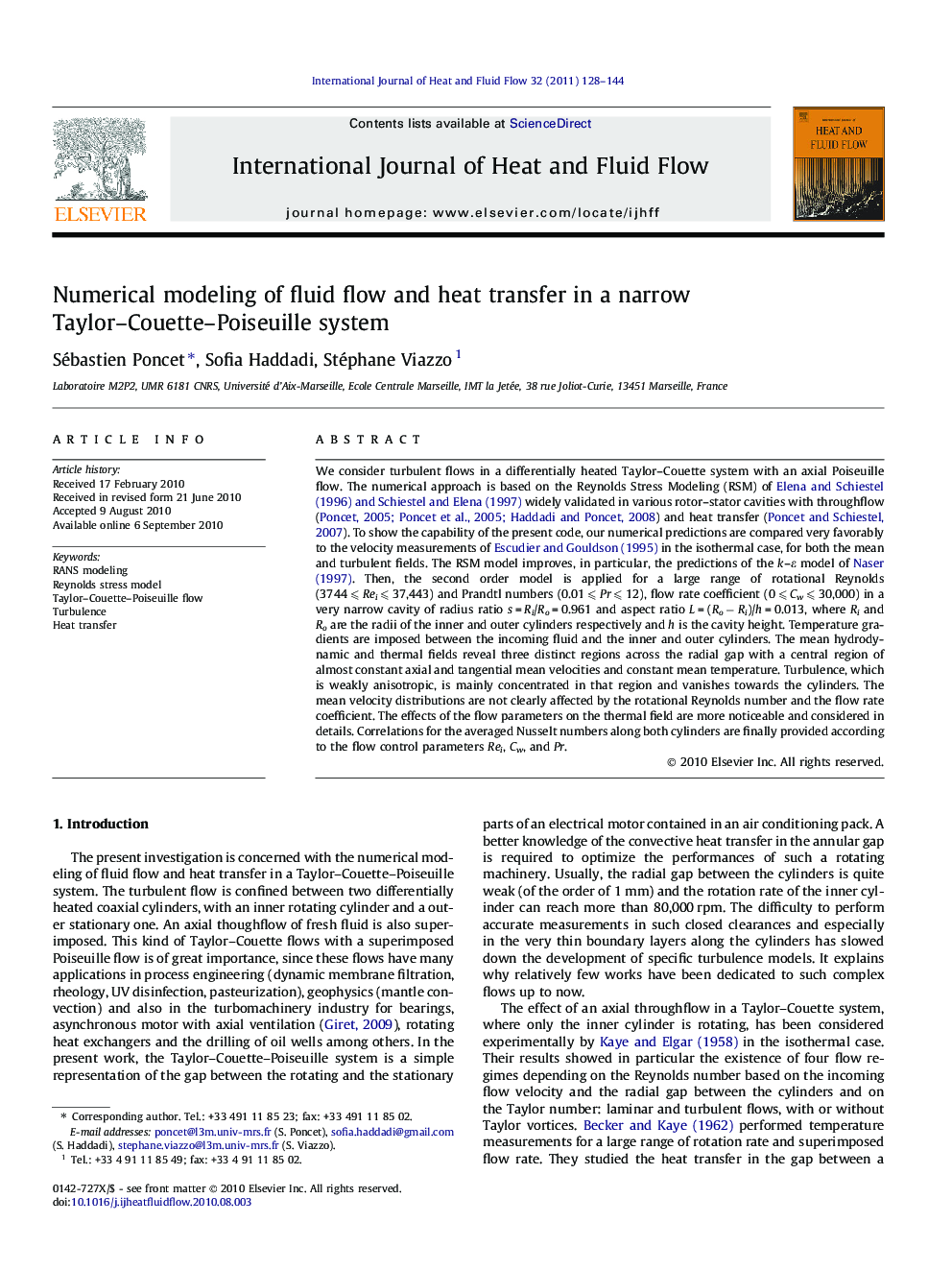| Article ID | Journal | Published Year | Pages | File Type |
|---|---|---|---|---|
| 655627 | International Journal of Heat and Fluid Flow | 2011 | 17 Pages |
We consider turbulent flows in a differentially heated Taylor–Couette system with an axial Poiseuille flow. The numerical approach is based on the Reynolds Stress Modeling (RSM) of Elena and Schiestel, 1996 and Schiestel and Elena, 1997 widely validated in various rotor–stator cavities with throughflow (Poncet, 2005, Poncet et al., 2005 and Haddadi and Poncet, 2008) and heat transfer (Poncet and Schiestel, 2007). To show the capability of the present code, our numerical predictions are compared very favorably to the velocity measurements of Escudier and Gouldson (1995) in the isothermal case, for both the mean and turbulent fields. The RSM model improves, in particular, the predictions of the k–ε model of Naser (1997). Then, the second order model is applied for a large range of rotational Reynolds (3744 ⩽ Rei ⩽ 37,443) and Prandtl numbers (0.01 ⩽ Pr ⩽ 12), flow rate coefficient (0 ⩽ Cw ⩽ 30,000) in a very narrow cavity of radius ratio s = Ri/Ro = 0.961 and aspect ratio L = (Ro − Ri)/h = 0.013, where Ri and Ro are the radii of the inner and outer cylinders respectively and h is the cavity height. Temperature gradients are imposed between the incoming fluid and the inner and outer cylinders. The mean hydrodynamic and thermal fields reveal three distinct regions across the radial gap with a central region of almost constant axial and tangential mean velocities and constant mean temperature. Turbulence, which is weakly anisotropic, is mainly concentrated in that region and vanishes towards the cylinders. The mean velocity distributions are not clearly affected by the rotational Reynolds number and the flow rate coefficient. The effects of the flow parameters on the thermal field are more noticeable and considered in details. Correlations for the averaged Nusselt numbers along both cylinders are finally provided according to the flow control parameters Rei, Cw, and Pr.
Research highlights► Turbulence modeling of opened Taylor-Couette flows. ► Parametric study of the flow parameters on the hydrodynamic and thermal fields. ► The RSM as an adequate level of closure for rotating flows.
